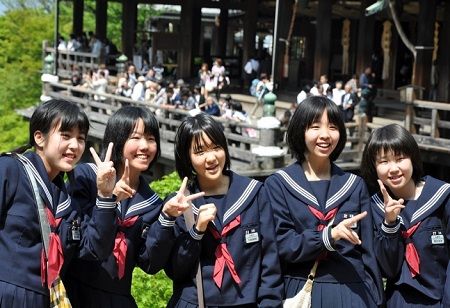-
Japan's postwar education system has been well known since the early days for its sharp focus on equality, its goal to deliver equal access to quality education for all students regardless of their background. Underpinned by the reforms implemented following the Asia-Pacific War, this focus on equality defined Japan's approach to compulsory education through homogenized curricula, equal allocation of resources, and universal participation. However, Japan is able to maintain this balanced framework without compromising academic excellence.
With one of the world's highest rates of literacy and a consistent high rate of achievement on international exams, Japan proves that equal opportunity and quality in education can exist side by side. Yet as quietly as these socioeconomic and gender disparities continue, so too does Japan continue to work on adapting policies aimed at narrowing these divides without sacrificing its education standards. This refocusing of equality captures Japan's continuing effort toward an equilibrium-oriented, inclusive, and high-achieving education system for equity as well as excellence.
Japan's 2025 Education Reforms
Japan's developing education policy situation in 2025 testifies to a progressive orientation toward innovation, equity, and global competitiveness. Led by MEXT, recent reform concentrates on redesigning the curriculum, active learning, and encouraging autonomous thinking in preparation for an evolving world. The transition to flexible learning modes, encouragement of STEM skills, and increased accessibility to higher education and lifelong learning seeks to construct a dynamic and inclusive knowledge economy. Free high school education and the 'Third Basic Plan for the Promotion of Education' are also policies reinforcing Japan's commitment to equal opportunity. These reforms fit into wider national priorities, such as digitalization, social cohesion, and sustainable development, making education a foundation of Japan's 2030 and beyond strategy.
Public Education and Standardization in Japan
Japan's public education is centrally managed by the Ministry of Education, Culture, Sports, Science and Technology (MEXT), which works to ensure consistency, fairness, and academic excellence throughout the country. Based on the Fundamental Law of Education and the School Education Law, Japan's public education maintains the premise that all citizens are entitled to equal opportunities in education, despite background.
“Education in Japan is not intended to create people accomplished in the techniques of the arts and sciences, but rather to manufacture the persons required by the State”, Arinori Mori, Japan’s first education minister.
The system is defined by a highly centralized national curriculum that allows for commonality of learning outcomes within schools. Local educational boards assist MEXT by implementing national policy to regional conditions while sustaining nationwide standards. The design has allowed for Japan to maintain consistently high academic achievement, as revealed by international measurement such as PISA.
Standardization provides equitable access to quality education, reducing gaps between urban and rural areas. The same standardization, though, has been criticized as being inflexible and putting too much pressure on students. Yet, Japan's model illustrates how centralized policy and local implementation can coexist to provide equitable and high-quality education, balancing intellectual rigor with the aim of inclusive access.
Rather than dismantling its high standards, Japan is retooling how they are reached. The core of this approach includes:
Flexible Learning Models: The inflexible, one-size-all model is being superseded by more individualized forms. Remote and hybrid learning models are now fully incorporated in the country's curriculum, with the aim that students in distant or disadvantaged areas get the same quality education as those in city centers.
Er. Koneru Satyanarayana, Chancellor, KL Deemed to be University, says, “A pivotal impact of technology on student performance has increased their interactivity and class engagement. The technology has enhanced overall comprehension, practical learning, and time management, thereby increasing the students' overall productivity. Modern technology has significantly reshaped the entire education system”.
Curriculum Redesign for Inclusive Excellence: The revised national curriculum centers on 'active learning' a strategy that promotes critical thinking, collaboration, and independent problem-solving. Breaking away from rote memorization, this approach fosters greater understanding at all ability levels, and all can excel.
Holistic Student Support: Career guidance counselors, learning support staff, and mental health counselors are now integrated in Japanese schools. These roles, previously seen as additional, are now integral to student development and equity objectives.
Digital Equity Initiatives: Japan has made digital learning resources available to everyone. All students from grade 1 upwards are given a government-subsidized laptop or tablet, and rural broadband infrastructure has been greatly improved. This is especially effective for poor families, bridging the digital divide that opened up during the COVID-19 pandemic.
Beyond Equality: Global Competence and Inclusion
Japan's redefinition of equality also encompasses equipping students to thrive in a globalized world. Immersion in English, cross-cultural communication, and AI literacy are now integrated across the curriculum.
Inclusive education, particularly for students with disabilities or multicultural backgrounds, has been broadened. Integrated classrooms with assistive technologies and differentiated instruction are becoming the rule rather than the exception. This inclusive practice promotes empathy and cooperation among students from all backgrounds.
Addressing Structural Disparities
Though progress has been made, issues remain. A 2024 NIRA report indicates that Japan continues to have great disparities based on parental socioeconomic status, specifically in access to 'shadow education' private tutoring and cram schools (juku). Though the government cannot do away with private enterprise in education, it has started providing free online 'juku-style' material through national portals to curb dependency on paid services.
Also, experiments with reforms are underway to promote increased school autonomy in curriculum provision while guaranteeing accountability via national testing and local control.
Wrapping It Up!
Japan's path towards redefining equality in education without sacrificing excellence is a refined interplay between tradition and reform. While major progress has been achieved in democratizing access to education, the process continues in ensuring that every student has an equal chance to succeed. The debate between sustaining high academic standards and inclusiveness will continue to define the future of Japanese education.
🍪 Do you like Cookies?
We use cookies to ensure you get the best experience on our website. Read more...

